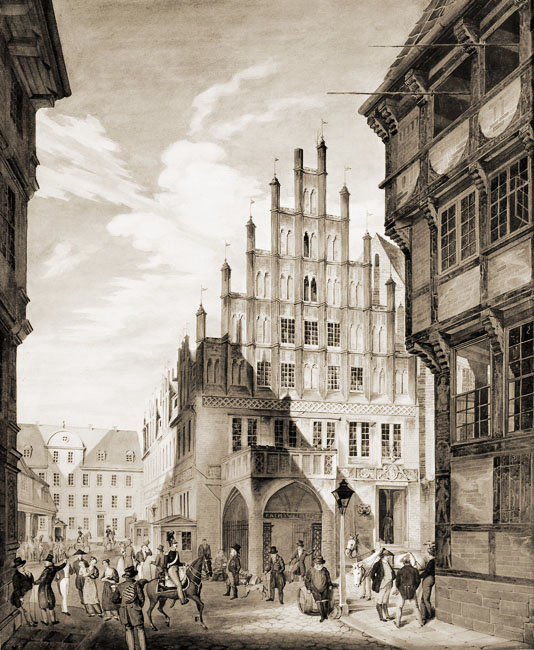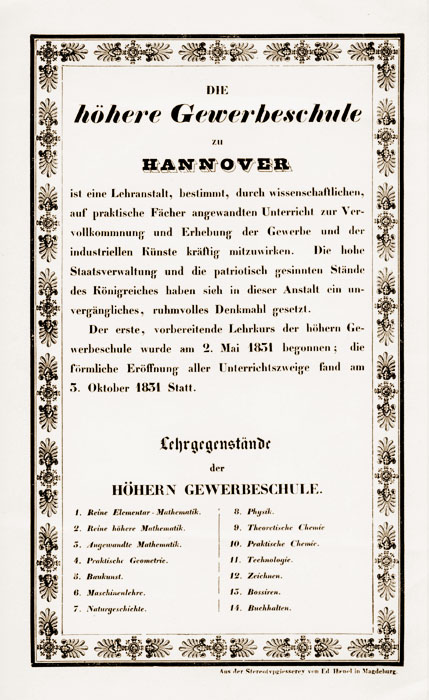


Today’s Gottfried Wilhelm Leibniz Universität was founded on 2nd May 1831. As the Higher Trade School it started its teaching activities with 64 students in the Bornemannsches Haus next to the Marktkirche in the historic city centre.
Students had to be at least 15 years old if they wished to attend the Higher Trade School, where they would learn a trade. The first director Karl Karmarsch, aged 28, came from the Polytechnic in Vienna and became one of the leading technologists of his time.
Hannover had been a kingdom since 1814 and was ruled in personal union with Great Britain until 1837. King George IV lived in far-off London, while the popular Adolph Friedrich, Duke of Cambridge, reigned in Hannover. It was during his reign that the modernisation of agriculture and the beginnings of industrialisation occurred.
Due to the absence of the king, Hannover had remained agricultural; training at the Higher Trade School was to help Hannover to catch up economically and reach the level of industrialisation that was already well underway in Great Britain. Personal Union with Great Britain came to an end in 1837, and the ultra-conservative Ernst August became King in Hannover.



His name is associated with the suspension of the state constitution in 1833 and the protest and dismissal of seven Göttingen professors, who became known as the Göttingen Seven.
In 1837, the Higher Trade School moved into its own new building in Georgstraße. This is where the Kröpcke Centre is today. The coming of the railways in 1842 was a major breakthrough for the Higher Trade School. Skilled engineers were required for the state railways. The number of students rose sharply, the curriculum was radically altered, and the institution was turned into a polytechnic in 1847. Entrance requirements and the age of the polytechnic students were raised. Teaching became more theoretical, mathematical and specialised.










